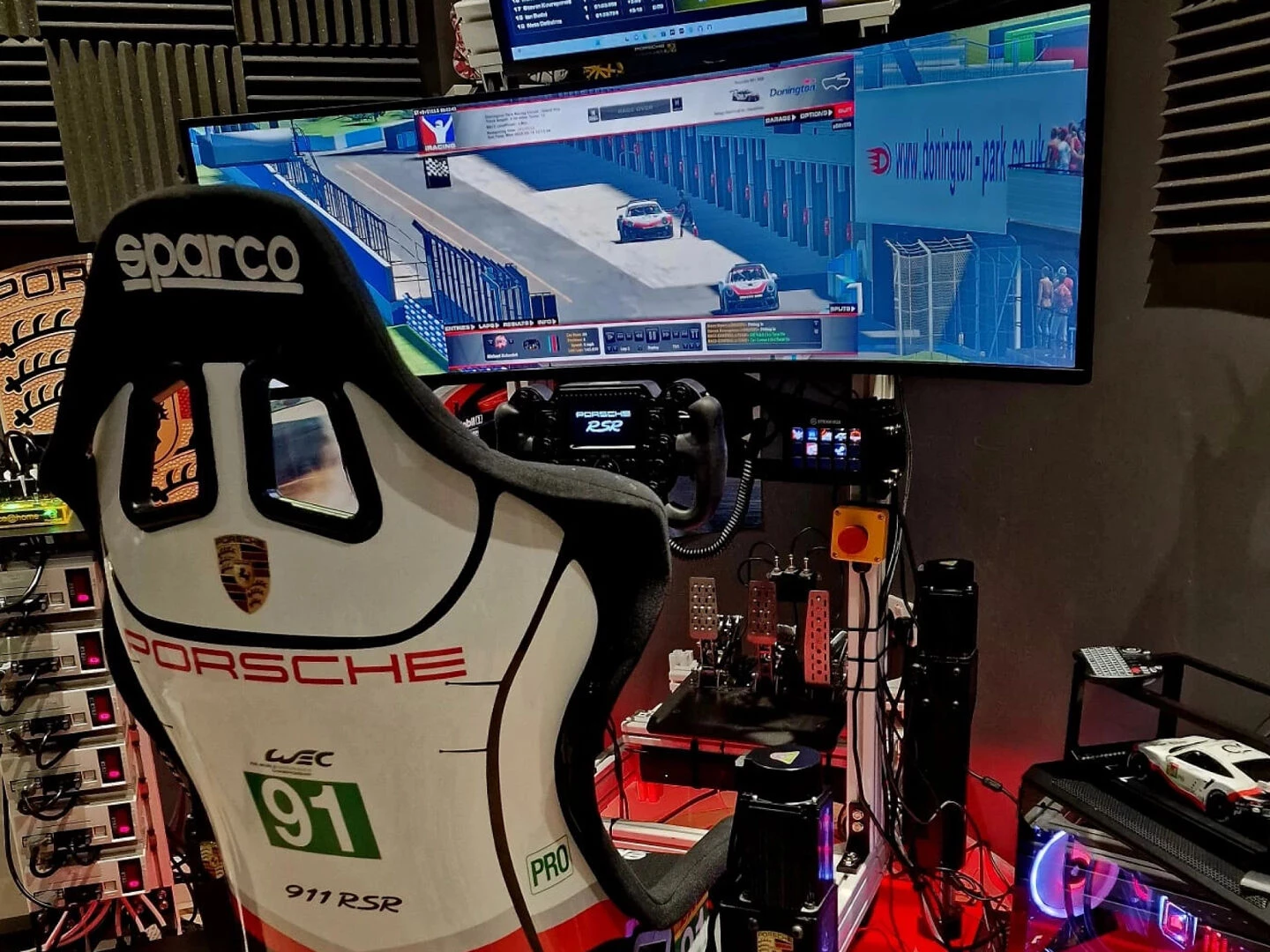Home racing simulators explained
For motorsport enthusiasts, a home racing simulator provides an immersive way to experience the thrill of racing without leaving the house. Whether you're a professional driver looking to refine your skills or a casual gamer wanting a more realistic driving experience, a racing simulator can be a game changer.
A home racing simulator integrates high-end hardware and software to replicate the feel of real-world driving. It typically includes a steering wheel, pedals, a seat, and a motion platform to simulate realistic road feedback. Let's examine a sim racing rig in greater depth and consider how it enhances the virtual racing experience.
Understanding the components
A good home racing simulator has several key components that help create an authentic road racing experience. Here's a breakdown of what's involved:
Steering wheel and pedals
The steering wheel is arguably the most essential part of a home racing sim setup. High-quality wheels feature force feedback motors that simulate the resistance and vibrations of a real car. Pedals also play a crucial role, with load cell or hydraulic braking systems providing a more natural braking feel than traditional gaming pedals.
Direct drive wheels offer superior force feedback for those looking for realism, while pedal sets with progressive brake resistance improve braking accuracy.
Sim rig and seat
The racing sim rig is the frame that holds all the components together. Sim rigs range from simple, foldable stands to full-motion cockpits that mimic real-world car movement. A sturdy rig helps prevent unwanted flex during intense racing sessions, ensuring better performance and immersion.
Another essential component is the seat. Some sim seats replicate actual racing seats, providing ergonomic support to enhance comfort during long racing sessions.
Monitors and VR
A high-quality display is vital for an immersive experience. Many racers prefer ultra-wide monitors or triple-screen setups to achieve a more natural field of view. Virtual reality (VR) takes immersion to the next level, offering a fully encompassing 3D perspective that makes the experience incredibly lifelike.
Motion platforms
Advanced racing simulators often incorporate motion platforms, which add physical movement to the experience. These platforms tilt and shift in response to in-game actions, simulating acceleration, braking, and cornering forces. Motion platforms bring an extra layer of realism, making the simulation feel more like driving a real car.
The best racing simulator for you
When selecting a home racing simulator, consider your goals and budget. An entry-level wheel and pedal setup may be sufficient if you're looking for casual fun. However, for those serious about realism and training, investing in high-quality components such as a direct drive wheel, load cell pedals, and a motion platform will significantly enhance the experience.
Simulation software is another crucial factor. Popular titles like iRacing, Assetto Corsa, and rFactor 2 offer highly realistic physics and competitive online racing environments, making them ideal for serious racers.
The ultimate racing experience at home
A home racing simulator provides an incredible way to experience the excitement of motorsport without the costs and risks of real-world racing. Investing in the proper hardware and software can create an immersive setup that enhances your skills and enjoyment.
Whether you're looking to improve lap times or enjoy a thrilling racing experience from the comfort of your home, a racing simulator can be a fantastic investment in your passion for motorsport.
About Us
Race@home launched in 2020, offering immediate shipment of high-end sim hardware to frustrated customers. Our acclaimed LowRider 5DOF and new LowSlider 6DOF platforms prioritise compact excellence.
Contact Us
raceathome@gmail.com
+441163326679
Leicester, United Kingdom
WhatsApp
Instagram

